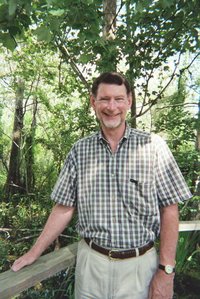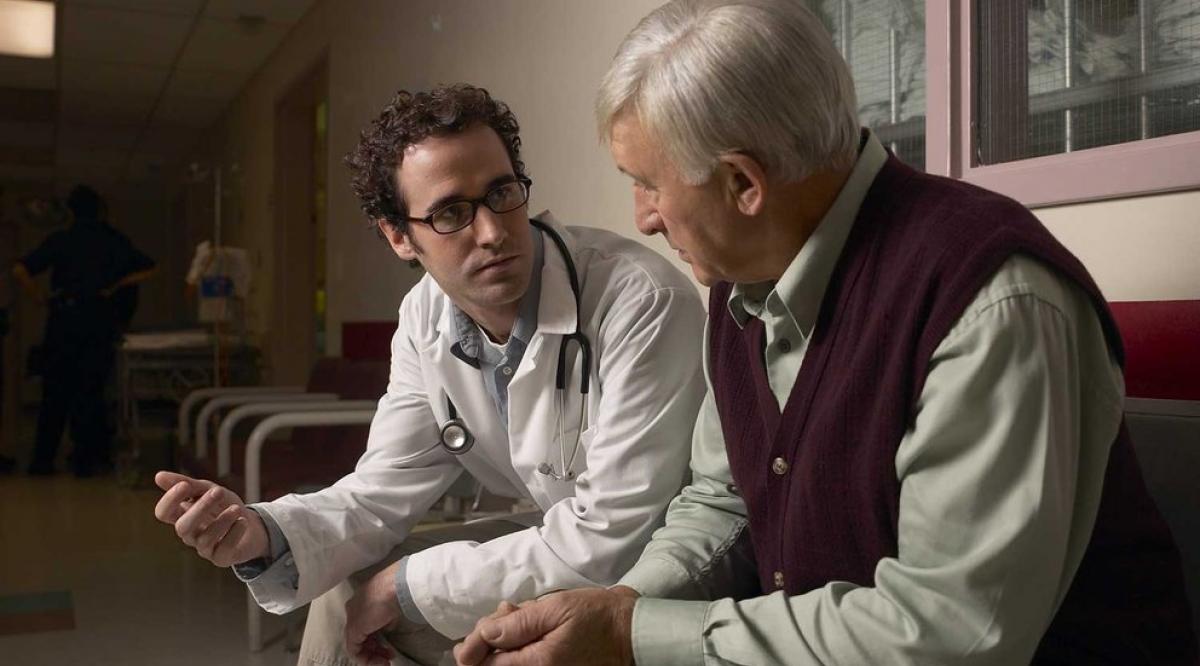Shortly before their first day of medical school, Jake Morgan and a small group of his University of Oklahoma (OU) College of Medicine classmates sat down at a luncheon with a woman who had brought along an iPad containing photos of her mother.
While sharing the pictures, the woman told the medical students her late mother’s nickname and about her sense of humor, favorite foods, and how she had met her husband. In a few weeks, the first-year students would dissect and study the mother’s 89-year-old body as part of their foundational gross anatomy course.
“In a very meaningful way, this anatomical donor becomes [the student’s] first patient.”
Jerry Vannatta, MD, University of Oklahoma College of Medicine
“That first cut did feel surreal. When you uncover the body, you’re reminded of the conversation,” Morgan, now a second-year student, recalled.
“In a very meaningful way, this anatomical donor becomes [the student’s] first patient,” said Jerry Vannatta, MD, professor emeritus and former executive dean of OU College of Medicine, who introduced the donor luncheon more than 15 years ago after he was inspired by a Buddhist medical school in Taiwan. “It’s a way of creating an empathic situation rather than one where black humor is used to deal with anxiety.” After first-year medical students complete their anatomy course, they meet with donor families again for a memorial service.
Richard Drake, director of anatomy at the Cleveland Clinic Lerner College of Medicine of Case Western Reserve University, and spokesman for the American Association of Anatomists, said he doesn’t know of any U.S. medical schools that have stopped using human cadaver dissections to educate students since recent advances in 3D virtual anatomy technology. Some schools use both cadavers and virtual dissection tables, and several now are exploring how, and whether, they will use cadavers in the future, he noted.
The Cleveland Clinic uses both an imaging program and fresh cadavers, with residents dissecting the bodies for the medical students to help save time and provide the residents with an anatomy teaching experience, Drake said. “I have concerns about whether the students would be prepared as they go into their third-year clinical rotation if they didn't have at least some cadaver experience.”
Michael Lehman, PhD, professor and chair, Department of Neurobiology and Anatomical Sciences at University of Mississippi Medical Center (UMMC), added that “there’s no substitute for cadaveric material.” Students must understand the human body to have a proper medical education, said Lehman, who oversees UMMC’s body donation program. According to a study published in Clinical Anatomy, (2015), however, there remains a relative shortage of bodies donated to the U.S. scientific community.
Making it personal
Medical schools typically seek ways to honor those who have bequeathed their bodies and to thank the donors’ families. Nearly all human anatomy programs in the United States hold memorial ceremonies, according to a 2013 Mayo Clinic survey. “The content of these ceremonies may include learners' reflections on mortality, respect, altruism, and personal growth,” the survey report noted.
In addition to honoring donors, such ceremonies—and the dissection experience itself—may help medical students feel more connected to patients. Authors of a Texas Tech University Health Sciences Center study found that schools sharing the donors’ demographics, background, and medical history resulted in greater student empathy and insight.
The OU College of Medicine’s donor luncheon is unusual in that new students meet the loved ones of the individual whose body they will dissect in gross anatomy class. When Vannatta first announced a plan to introduce students to donor families, Daniel O’Donoghue, PhD, professor of cell biology who runs OU’s anatomy program, said he argued against it. He has been convinced otherwise, noting “It turned out to be a pretty extraordinary thing.”
Other schools handle the issue of donor privacy differently. UMMC, which receives more than 200 bodies a year, holds a Ceremony of Thanksgiving after the first-year students complete their anatomy course. Students have the privilege of meeting donor families at the ceremony, but not necessarily the families of those whose bodies they studied. “We do respect the privacy of the patients, their families,” Lehman said.
McGill University in Montreal holds a commemorative service every June for family and friends of body donors; students share personal reflections, read donors’ names and perform music. If families don’t have their own burial plans, McGill cremates the body remains after the anatomy course and buries the ashes at its plot in the city’s Mount Royal Cemetery, where a monument thanking the donors is located.
Helping a future generation of physicians

Given the pressing need for doctors in his state of Mississippi, Lehman said it’s important for families to understand that their loved ones are helping to educate a future generation of physicians. Making the experience as easy as possible for the donor’s family is a priority, too.
When Casey Pace, 68, died of lung cancer at his home early on a Sunday morning, his widow called a special number at UMMC, which sent someone to retrieve his body and bring it to the Jackson, Miss., medical school. “It was just as smooth and as comforting as it could have been,” recalled Pace’s widow, Mary Martha Pace.
Casey Pace, an attorney with the Mississippi Legislature and volunteer youth soccer coach, was aware of the body donor program because of family members who had participated. “He was a very giving person,” his widow said. “Before he was even diagnosed this was something he wanted to do. He saw the need and just never hesitated in his decision.”
In April 2016, the university welcomed Mrs. Pace, her late husband’s first wife and his grown son, along with other families, to a Ceremony of Thanksgiving honoring more than 260 donors. A medical-student chorale sang hymns, and students and professors spoke of donors as teachers.
“It was just very, very moving,” said Mrs. Pace. “It really made it all worthwhile.” Given her late husband’s passion for coaching young soccer players, she added, “I thought it was very fitting that he was able to teach after he passed away.”
